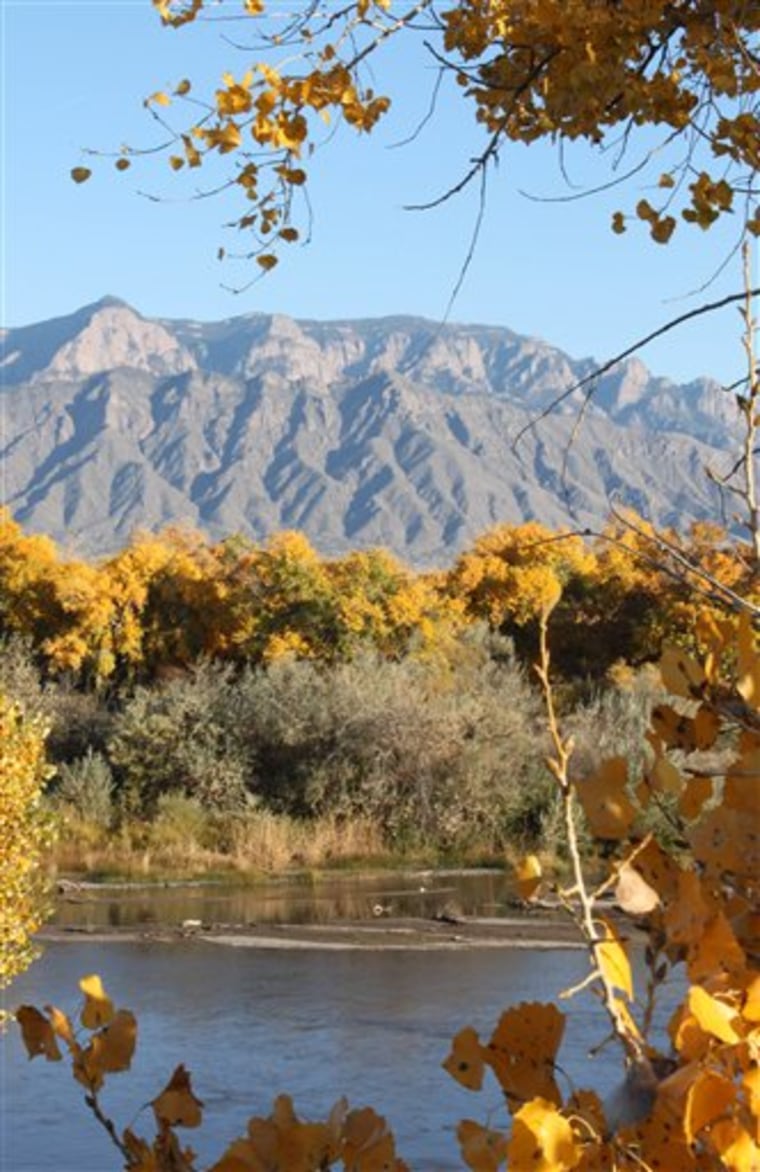Forests throughout the Southwest are growing quiet as the season for bugling elk comes to an end. The aspens in the high country and cottonwoods in the valleys are dropping their golden leaves, and snow has dusted mountain tops in Colorado, New Mexico and Arizona.
There's no denying it's fall.
But for land managers, hunters and other outdoor enthusiasts, it was a long time coming in some areas. They had to wait a few extra weeks for summer to loosen its grip.
The slow change in season comes on the heels of months of volatile weather. Dust storms enveloped Arizona, drought paralyzed Texas and New Mexico and temperatures far above normal plagued most of the country. The summer that would never end is how forecasters with the National Weather Service in Albuquerque referred to it.
Those sweltering temperatures are thought to be one reason fall was late in some spots. The obvious measure was the foliage.
By the end of September, cars are usually funneling up the narrow roads leading to New Mexico's ski areas so spectators can soak in the colors. Near Santa Fe, many of the trees were still green in early October.
There were similar reports from Flagstaff, Ariz., Ouray, Colo., and Taos.
"I was up in Taos last week and noticed that it was late. Everyone was talking about how late it was. But it was very beautiful," said Andy Graves, an entomologist with the U.S. Forest Service in New Mexico. "A lot of people are just attributing it somewhat to the drought and maybe the elongated summer. It was a weird year."
Some areas escaped the shift of the season's start.
Along the Rio Grande in central New Mexico, officials said the yellowing of the cottonwoods was on schedule. So was the migration of the sandhill cranes and geese that visit Bosque del Apache National Wildlife Refuge each fall.
In Gunnison, Colo., U.S. Forest Service pathologist Jim Worrall said things appeared to be normal, with only some reports of foliage changes being a week late.
Record drought, high temperatures
Slight shifts in the peak of fall foliage are normal since the turning of the leaves is affected by moisture, temperature and exposure to daylight. Scientists say those elements come in different combinations each year, making no two fall seasons alike.
But with the sting of record drought and high temperatures still lingering, scientists are looking carefully at the region's forests to ensure they are healthy. With their white bark and lush understories, aspens are sometimes looked to as a "report card" for the forest.
It was a combination of record breaking temperatures and a severe drought that peaked in southern Colorado in 2002 that triggered a sudden decline in the aspen population, Worrall said.
In Arizona, the culprits were frost and drought, said Mary Lou Fairweather, a forest pathologist based in Flagstaff.
Another aspen die-off is possible given the age of the stands and pressures of continued drought, especially in New Mexico, the experts said.
Another factor is the Western tent caterpillar, which has defoliated about 82,000 acres in New Mexico this year. That's more than double the area of leaf-less trees that was mapped last year, Graves said.
The insect usually doesn't kill the trees, but a few consecutive years of defoliation would be cause for concern, he said.
In the mountains surrounding Chama, N.M., officials have noticed changes this fall. Joe Carrillo, a timber manager with the State Forestry Division, said some of the trees' leaves went straight from green to brown before dropping off, while others took longer to change color.
After the tent caterpillar eats away a tree's leaves, the tree buds again later in the season. The new, smaller leaves can hang on longer, but late summer moisture and cold temperatures can cause wrinkles in the regrowing process.
"I've talked to loggers who have been in this area for generations. They've noticed the fact that whenever we get late moisture, the leaves tend to either not turn at all or are late in turning color," Carrillo said, offering another theory for the late signs of fall.
Whether aspens, cottonwoods and other deciduous trees are taking longer to change color or are losing their leaves faster, scientists can generally point to the weather. It's harder to pinpoint why neighboring stands respond differently, Carrillo said.
"It's one of those things where it's not one single vector," he said. "It may be insects. It may be disease. It may be some other environmental conditions."
Despite fall's tardiness in some areas, experts said there should be no consequences come next spring's growing season. And that could come sooner given forecasts of more above-normal temperatures and little precipitation.
